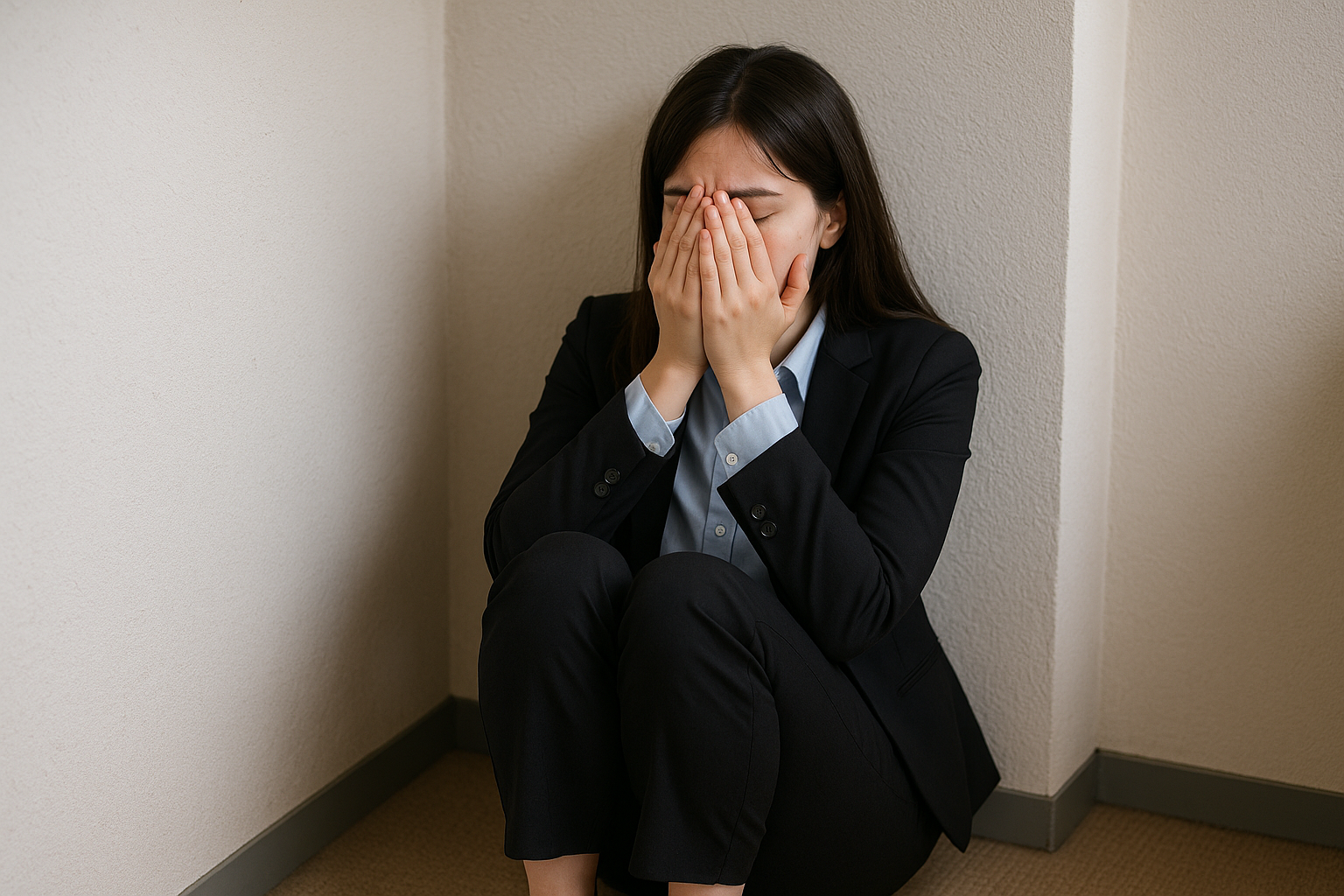What is Bathroom-Camping?


Picture this: fluorescent lights, the hum of social pressure, a constantly buzzing phone, and the relentless speed of modern life. Now imagine a silent, solitary stall behind a locked door—the only escape in a world that rarely lets up. Welcome to “bathroom-camping,” the now-viral Gen Z phenomenon that turns public restrooms into makeshift wellness sanctuaries.
At first glance, the term might sound like a quirky internet joke. But bathroom-camping is far more than just a TikTok trend; it’s a cultural signal. Gen Z, a generation more attuned to mental health than any before, is taking control of overstimulation in the only place where society permits a moment of stillness: the bathroom.
Bathroom-camping refers to the intentional retreat into a public or private bathroom—especially the stalls—as a temporary safe zone from mental exhaustion, social anxiety, or sensory overload. This ritual isn’t about bathroom use in the traditional sense. Instead, it’s about disconnecting from external chaos to reconnect with inner calm.
This isn't new behavior. What’s different is how openly Gen Z talks about it. Through videos, memes, and storytelling, they've normalized what was once a private act of withdrawal. TikTok is overflowing with “Bathroom Chronicles,” where young users share their emotional detox moments, complete with lo-fi music and confession-style edits.
1. Privacy in Public:
Bathrooms are often the only spaces in schools, workplaces, and malls where one can be alone without raising eyebrows. You’re not questioned for needing a break in a stall—people just assume you're handling “personal business.”
2. Sensory Buffering:
Between echoing tiles and closed stalls, bathrooms provide an acoustic cocoon. They offer a momentary escape from the chatter, clatter, and clamor of daily life.
3. No Expectations:
There’s no pressure to perform, smile, or socialize. You can breathe. Cry. Meditate. Or simply scroll TikTok for five minutes without the world expecting anything from you.
Gen Z came of age in a world already on fire—climate crises, pandemic isolation, economic instability, and a never-ending stream of information. Unsurprisingly, this generation reports the highest levels of anxiety and depression. In a 2023 APA survey, over 90% of Gen Z adults said they had experienced at least one physical or emotional symptom due to stress.
Add to this the hypervisibility of social media, and it becomes clear why moments of solitude feel essential. Bathroom-camping is self-care born out of necessity.
Far from hiding their coping mechanisms, Gen Z broadcasts them. #BathroomBreak has millions of views on TikTok. Influencers share “stall-side chats” where they decompress from events, process bad news, or vent about school stress. These aren’t just performative moments—they’re microtherapy, democratized and digitized.
Instagram and TikTok have evolved into digital journals, and bathroom-camping content turns a solitary act into communal support. Comments often read like group therapy sessions: “Omg I thought I was the only one,” or “These moments saved my sanity today.”
This generation has rebranded self-care. It’s no longer only about spa days and bubble baths—it’s about boundaries, pauses, and processing emotions in real-time. Bathroom-camping is as raw and unfiltered as self-care gets. It’s not curated. It’s not always pretty. But it’s real, and it works.
We often glamorize wellness through aesthetics, but mental health doesn’t care about vibes. Sometimes, wellness is a few deep breaths in a Target stall during a sensory overload moment. And that’s valid.
While the trend is rooted in necessity and awareness, there are valid concerns. Using a restroom as a coping mechanism highlights systemic failures—schools and workplaces often lack quiet, private spaces for decompression. Bathroom-camping shouldn't have to be the best available option.
Moreover, extended hiding can sometimes be a red flag for more serious mental health issues, such as depression or social withdrawal. It's essential that institutions don't just accept this behavior as "normal," but investigate what structural changes can help students and workers feel safe outside of bathrooms, too.
1. Mental Health Rooms:
Create designated “quiet rooms” in schools and offices. Think calming colors, minimal decor, bean bags, and no screens. Just space for stillness.
2. Normalize Breaks:
Mental breaks shouldn’t be stigmatized. Give students and employees the freedom to step away without judgment—no excuses needed.
3. Train Staff to Recognize Burnout:
Bathroom-camping can be a red flag. Equip counselors and managers with training to spot the difference between routine solitude and emotional distress.
4. Use Social Listening:
Brands, mental health professionals, and educators should monitor these viral trends—not to police behavior, but to understand what support looks like in 2025.
Embracing the Pause
Bathroom-camping isn’t about escape—it’s about survival. It’s a signal that the world is too loud, too fast, and sometimes just too much. But Gen Z has figured out something powerful: when the world won't give you a break, you take one anyway.
So next time you hear someone joke about hiding out in a bathroom stall, remember—it might be the healthiest thing they’ve done all day.
#BathroomCamping #GenZMentalHealth #TakeABreak #AnxietyRelief #QuietTimeMatters #MindfulPause #MentalHealthAwareness #MentalHealthMatters #SelfCareIsNotSelfish #OverstimulatedAF #TikTokTherapy #BathroomChronicles #SilentSanctuary #LoFiEscape #SafeSpaceCulture